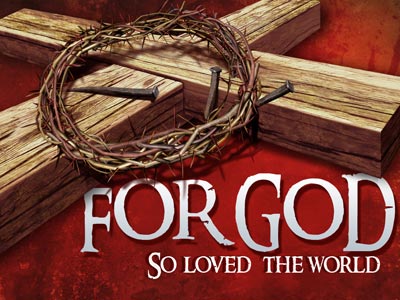-
Csi Golgotha: Who Killed Jesus? Series
Contributed by David Dykes on Nov 28, 2017 (message contributor)
Summary: Why would God send His Son to die for us? The answer is simple: LOVE. You’ve heard of a crime of passion. The cross was a place of passion. But it wasn’t our passion; it was the loving passion of God who loved us enough to send His Son to die for us.
INTRODUCTION
Easter is only two weeks away. Next Sunday, NY Times bestselling author, Joel Rosenberg, will be back with us. He’ll be speaking in the Sunday morning services and at 5:30 I’ll interview about his latest book and about events in the Middle East in light of Biblical prophecy.
We’ve been counting down the 94 hours that changed the world. The countdown started at the Last Supper and ends on Easter Sunday morning when the empty tomb is discovered. In this message, I’m going to talk about “CSI Golgotha.” I’ll be answering the question, “Who killed Jesus?”
One of the most popular television shows of recent history is CSI, which stands for Crime Scene Investigation. That’s actually a fictional title, because the actual law enforcement term is Crime Scene Analysis. Maybe the producers thought CSA sounded too much like the Confederate States of America.
On television, CSI is about a team of experts who examine a crime scene. They use the forensic evidence to determine the nature of the crime, and hopefully leads them to the guilty party. In this message we could say CSI stands for Cross Scene Investigation. I want us to visit the scene of the crucifixion and look for clues about who was or is actually guilty of crucifying Jesus. After 2,000 years, there’s not a lot of forensic evidence, but we have several eyewitness accounts. Tradition tells us that Mark is relating the gospel as told to him by Simon Peter.
Mark 15:21-39: “A certain man from Cyrene, Simon, the father of Alexander and Rufus, was passing by on his way in from the country, and they forced him to carry the cross. They brought Jesus to the place called Golgotha (which means The Place of the Skull). Then they offered him wine mixed with myrrh, but he did not take it. And they crucified him. Dividing up his clothes, they cast lots to see what each would get. It was the third hour when they crucified him. The written notice of the charge against him read: THE KING OF THE JEWS. They crucified two robbers with him, one on his right and one on his left. Those who passed by hurled insults at him, shaking their heads and saying, ‘So! You who are going to destroy the temple and build it in three days, come down from the cross and save yourself!’ In the same way the chief priests and the teachers of the law mocked him among themselves. ‘He saved others,’ they said, ‘but he can’t save himself! Let this Christ, this King of Israel, come down now from the cross, that we may see and believe.’ Those crucified with him also heaped insults on him.”
“At the sixth hour darkness came over the whole land until the ninth hour. And at the ninth hour Jesus cried out in a loud voice, ‘Eloi, Eloi, lama sabachthani?’—which means, ‘My God, my God, why have you forsaken me?’ When some of those standing near heard this, they said, ‘Listen, he’s calling Elijah.’ One man ran, filled a sponge with wine vinegar, put it on a stick, and offered it to Jesus to drink. ‘Now leave him alone. Let’s see if Elijah comes to take him down,’ he said. With a loud cry, Jesus breathed his last. The curtain of the temple was torn in two from top to bottom. And when the centurion, who stood there in front of Jesus, heard his cry and saw how he died, he said, ‘Surely this man was the Son of God!’”
Before we look at this death scene, let’s visit another death scene. The place was Chicago, and the year was 1910. Mr. and Mrs. Clarence Hiller were asleep in bed when they heard a noise. Mr. Hiller got up to investigate and he encountered an armed robber in their home. There was a struggle, and shots were fired. Mr. Hiller was shot twice and died as the robber fled the house.
Later that morning, Chicago police arrested a parolee named Thomas Jennings. He had a gun and injuries from a scuffle. He claimed he had never been near the Hiller home. But there was something that confirmed the fact that he had been there. A few years earlier, Scotland Yard had brought an exhibit to the World’s Fair in St. Louis. They demonstrated a new scientific way to identify criminals long after they were gone from the scene of the crime. The new crime solving method was fingerprinting.
The Chicago Police had been studying this science. Unfortunately for the suspect, a railing on the front porch of the Hiller’s house had been freshly painted and Jennings left a clear imprint of his fingerprints in the drying paint. Thomas Jennings was the first criminal in law enforcement history to be convicted using fingerprint evidence.

 Sermon Central
Sermon Central



